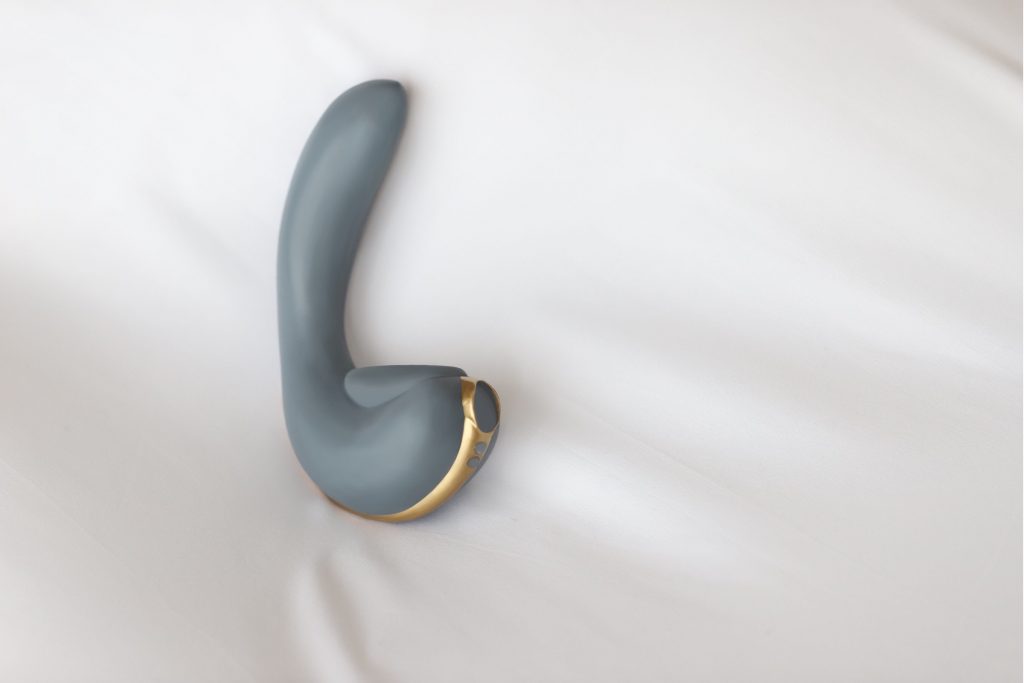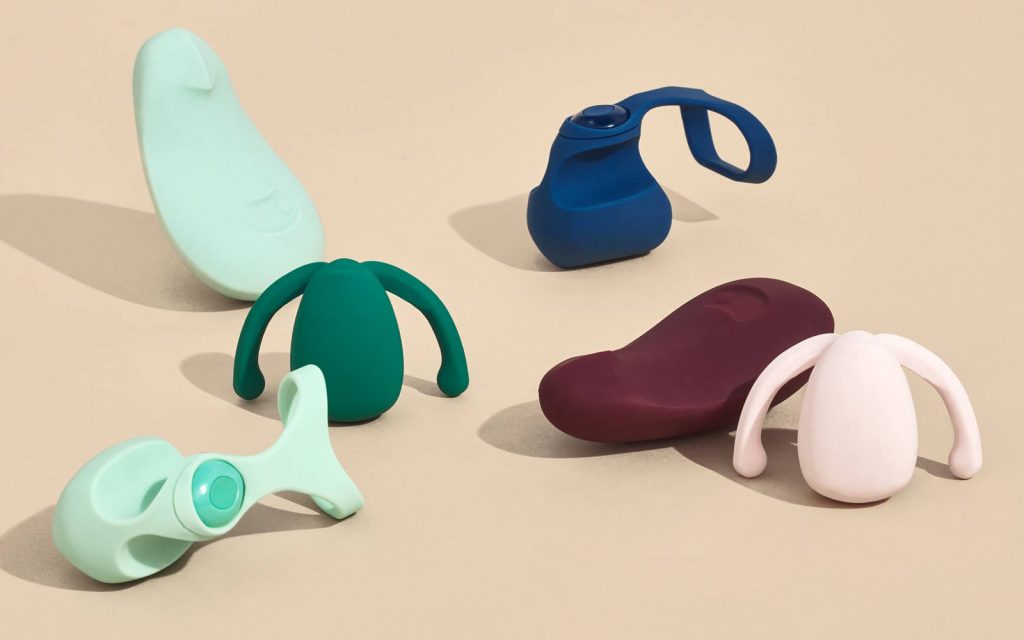Talking Tech, Gender, Pleasure and Politics With Lora DiCarlo’s Founder
We speak with Lora Haddock about overhauling an industry with innovation and inclusivity

While it might seem like a long time ago, 2019’s CES was the stage for a debacle that launched important conversations about gender bias, inclusivity and women’s pleasure within the tech industry. At the center: Lora DiCarlo, a sex-tech company founded by Lora Haddock, whose women-centric Osé pleasure toy was awarded a Robotics Innovation Award. Subsequently, the award was rescinded and Lora DiCarlo wasn’t allowed to showcase the product at CES—nor exhibit at the event at all.
 First, CES organizers and the Consumer Technology Association (CTA) deemed Osé disqualified and considered it obscene. Meanwhile, several sex-tech companies were showcasing realistic dolls, VR porn and more, all centered on cisgender, heterosexual male pleasure. Then the story changed: Osé was not obscene, but instead ineligible for the Robotics and Drone category—despite having several patents pending for robotics.
First, CES organizers and the Consumer Technology Association (CTA) deemed Osé disqualified and considered it obscene. Meanwhile, several sex-tech companies were showcasing realistic dolls, VR porn and more, all centered on cisgender, heterosexual male pleasure. Then the story changed: Osé was not obscene, but instead ineligible for the Robotics and Drone category—despite having several patents pending for robotics.
While the fiasco was infuriating for the Lora DiCarlo team, Haddock says that ultimately, she’s pleased it occurred as it forced the tech industry to take a long-overdue look at itself. We recently met with her (and director of marketing Sarah Brown) in NYC to learn more.
Is there some part of this whole CES debacle that’s actually been positive?
I think it was actually fabulous for us. Basically, it took a spotlight and put it right on all of these issues that are kind of being slow-rolled. And CES was having issues like that repeatedly, year after year. It just blew the whole thing up again. But it’s not just at CES, it’s throughout the tech industry. It’s in society in general.
Yes, it’s unfortunate that we lost that award, but it definitely gave us a lot of power and a lot of exposure—as well as the opportunities and ability to talk about the dearth of women, minorities and LGBTQ+ folks within those industries. We would welcome a conversation with the CTA, the ability to talk to them and help them. I would absolutely love to help them turn this around and take this as an opportunity to help lead the tech community into a more forward-thinking, provocative and more inclusive space.
Hold the phone, did you just call women’s sexual health and wellness “profane?”
It’s interesting that you use the word “provocative.”
Yeah, and when they revoked the award they were using words like “immoral” and “obscene” and “profane.” We were like, “Hold the phone, did you just call women’s sexual health and wellness ‘profane?'”
Which is absurd for so many reasons, but certainly considering there are Real Dolls on show at CES.
They have Solana the Real Doll. It’s a head with tits and it gives blowjobs. But we’re obscene.

When founding your company, was that what you wanted to address—this reductive view of sex and pleasure in tech?
This was always something that I wanted to solve. So this CES thing was like, we all wanted to talk about this anyway. The conversation for us, for me, has always been about de-stigmatizing sex and sexuality and preferences. There’s still so much taboo wrapped around sex. And I wanted to openly talk about gender, about preference, about embracing and loving your own body and how that’s OK.
Being a woman entrepreneur, it afforded me the ability to speak out a little bit more about women entrepreneurs and our battle with VC [venture capital] and fight for funding, and the lack of women and underrepresented communities sitting at the C-suite level. I really wanted to start seeing a balance there. And all they did was give us a big, big voice. They just amplified it for us.

Tell me about Osé. Where or how did this product begin?
It originally came from me having a hit-your-head-on-the-wall kind of moment. I literally had a blended orgasm that landed me on the floor and I just laid there stupefied for a minute going, “How do I do that again?”
I have a healthcare background and a kind of an obsession with human anatomy. At that point, I dove into trying to understand erogenous physiology in females better. And, “How do I recreate this?” In doing so, I discovered there’s no product that does this. There’s a huge dearth of representation and knowledge about female physiology and how our parts work. You can open up an anatomy book and you see everything on the outside and then you go to the inside and all you see is reproductive organs, right?
Then, [I began] having so many conversations with friends of mine, where we talked about what we really wanted a product to do and how come there’s nothing like that for us, but there’s plenty of products for men that understand male physiology. Why hasn’t this been done already? What can I do to solve this problem?
Immediately three things were really, really evident. We wanted something that eliminated vibration in favor of biomimicry—or the mimicry of human motion. We wanted to mimic the sensations you get with a partner. The other thing was, we wanted something that you could conform and adjust and customize for each individual user. Because no two folks are the same—your erogenous physiology isn’t the same, your G-spots aren’t in the same place, your clitoris isn’t the same spot, pubic angles are different. Additionally, we wanted something that you don’t have to use your hands with. There are just better things to do with your hands.
There’s a way to do it. We just had to be really smart about the design and how we execute it.
As it’s not a “traditional” vibrator, was it tricky tech to figure out?
Nope! [laughs] It was really, “Why doesn’t this exist?” So it’s a “come-hither” motion [similar to a finger beckoning gesture] directly over the G-spot. What we did was take a multitude of data from individuals—where’s your G-spot? Where’s your clitoris? What’s the circumference of your vaginal opening? And what’s your pubic angle like? We took that data, and we designed around that. Then we had to figure out how are we going to create a motion that can hit all of those spots. That’s how we drove the design. Form follows function, but we still wanted it to be attractive.

Can you tell us about the form?
You don’t want to know how ugly it was at first! [laughs] But at first, it was about—I just want something that works. I want it to work. I want the design to make sense. I want the mechanics to work. And we can figure out how pretty it is later. Eventually, we got a rendering from a tattoo artist of what they thought it might look like—without showing them anything, just describing it to them. We took that and went, “Well, this is different. Let’s go with this.” And we started building on that concept and redid the whole design. And that’s how we ended up with the current design.
Sex tech is so inventive and can be so thoughtful—from all angles.
Technology is constantly changing every day, it’s constantly evolving. Which is why it’s so important for industries like sex tech to be involved, for women’s products and vagina products to be in this space is because that technology transfer doesn’t happen otherwise.
I mean, we’re not just creating a sex toy. We’re creating new firmware, we’re creating all sorts of new things that can fall into a multitude of different industries. And I think today, to try to shut out an entire industry that is involved in tech would just be cutting off your nose to spite your face. It’s the same with diversity. Blocking anybody from any space is detrimental.
When you start hiring people that might disagree with you or question you—that’s when you start innovating
That blocking is so baffling because traditionally, straight, cisgender white men love to make money and if you cater to more people and include more people—
Yes! This is Sarah’s argument verbatim. But we’ve also had an insane amount of support from straight, white cis males. I think it’s just like I said—it’s a systemic problem. The problem that I see continually is people want to hire people that look just like them. They want to hire people that went to the same schools, and they want to hire people that talk like them, think like them and that’s because it’s easy and it’s safe. But when you start hiring people that might disagree with you or question you—that’s when you start innovating.
It’s incredible to have this conversation and hear from the source, from women in the industry, just how far beyond an award at a tech event this really stretches.
Yes! What this allows us to do is create a platform in order to lift others up and allow them to speak out about how they represent themselves. I can’t represent the whole LGBTQ+ community, but I can hopefully help them speak up. I can’t speak as a person of color, but I can try to help lift them up and help them speak out. Those minorities and underserved communities need to be able to have a voice and I would love to be the platform that they can use. Ultimately, we’re very product-focused. But it’s not just about sex or the tech industry or de-stigmatizing sex. It’s about inclusion, and it’s about a movement.
Images courtesy of Lora DiCarlo












